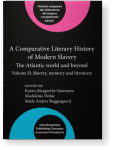Chapter 17
“From Mary’s own lips”
Orality, transcription, and editing in The History of Mary Prince
This chapter explores the complex layers of editing and mediation embedded in the
abolitionist project of converting Prince’s storytelling into The History of Mary Prince, a West Indian
Slave, Related by Herself. I re-examine the tripartite editorial relationship between Pringle (editor), Moodie
(transcriber), and Prince (narrator) as a salient example of nineteenth century editorial practice to expose the
tensions between its antislavery aims and the purported accuracy of Prince’s “history.” Does Prince own her story?
Is the text a work of collaboration, distortion, or appropriation? I interpret the editorial project and read
closely scenes that demonstrate how Prince manages to break free from Pringle’s intensive editing and Moodie’s
excision to reveal her distinctive voice that readers can, indeed, hear.
Article outline
- Repetitions and prolixities
- Textual alterations: Thomas Pringle and Mary Prince
- Resemblance: This is not Mary Prince
- Digital afterlives of Mary Prince
- Author queries
-
Notes
-
References
This content is being prepared for publication; it may be subject to changes.
